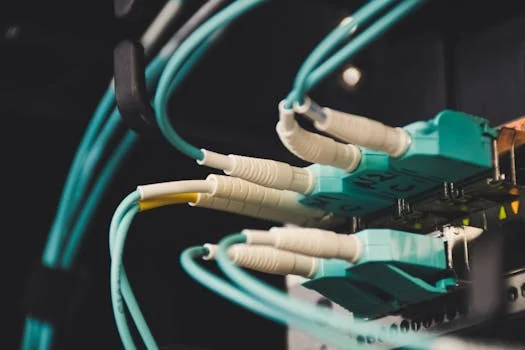
Introduction
In a bold strategic pivot, Jumia Technologies AG, Africa’s leading e-commerce platform, has partnered with Mirakl Ads—an AI-powered retail media solution—to overhaul its digital advertising operations. The move aims to monetize Jumia’s growing web traffic, empower local sellers with precision ad targeting, and bring sophisticated ad tech to a continent often overlooked in global advertising conversations.
The announcement, made in July 2025, marks a critical turning point for the company as it strives for profitability by moving beyond its traditional logistics-heavy model and into the high-margin, data-rich world of retail media.
For more: https://africatrademonitor.com/
Jumia: Africa’s E-commerce Pioneer Facing Profitability Pressure
Since its founding in 2012, Jumia Technologies AG has positioned itself as the pioneer and torchbearer of online retail in sub-Saharan Africa. The company operates across nine African markets—namely Nigeria, Kenya, Egypt, Ghana, Senegal, Morocco, Algeria, Ivory Coast, and Uganda—each presenting a unique blend of opportunity and logistical complexity. Jumia’s vision from the outset was ambitious: to become the Amazon of Africa, bridging vast geographical gaps and fragmented supply chains through technology. That aspiration reached a symbolic high in April 2019, when Jumia became the first African tech startup to be listed on the New York Stock Exchange (NYSE), raising over $196 million in its initial public offering.
The listing was heralded as a landmark moment not just for Jumia, but for Africa’s digital economy as a whole. It was seen as validation that a company built and operating within the African continent could capture the attention—and capital—of global investors. Media outlets, venture capitalists, and analysts from around the world watched closely as Jumia promised to leapfrog traditional retail challenges and unlock a continent teeming with youthful demographics, rising mobile adoption, and underserved commercial infrastructure.
However, in the years following its IPO, Jumia’s narrative has evolved from triumph to trial. While the company has indeed cemented itself as Africa’s leading e-commerce player by market reach, the road to profitability has remained elusive. Its business model, heavily reliant on building out its own logistics infrastructure to cope with unreliable third-party delivery systems, proved both necessary and financially burdensome.
🔻 Persistent Losses and Eroding Investor Confidence
One of the most significant challenges Jumia has faced is its inability to generate consistent profits. Since its inception, the company has posted year-on-year losses, eroding investor confidence and forcing multiple rounds of strategic realignment. While revenue growth surged during the COVID-19 pandemic due to increased online ordering, this proved temporary. As of 2024, the company reported a staggering 20% year-over-year decline in revenue, driven by both macroeconomic turbulence and internal operational recalibrations.
Inflationary pressures, foreign exchange volatility, and consumer purchasing power erosion across several African economies exacerbated the situation. For a company operating in multiple currencies and markets—many with weak infrastructure and inconsistent regulations—maintaining cost control while scaling proved to be an uphill battle.
Jumia’s recurring losses raised questions about the sustainability of its model, which, though innovative, depended on high-cost logistics and fulfillment operations that weren’t easily offset by thin product margins. The company’s heavy investments in warehousing, fleet management, and delivery personnel reflected a pressing need to control the customer experience end-to-end. But this vertical integration came at a steep financial price.
🛑 Market Retrenchment and Strategic Withdrawals
Recognizing the unsustainable burn rate, Jumia’s leadership initiated a series of difficult—but arguably necessary—retrenchments. In 2022 and 2023, the company announced its exit from underperforming markets, including South Africa and Cameroon, to refocus on its most profitable regions: Nigeria, Egypt, and Morocco. These markets represented the lion’s share of its active users and Gross Merchandise Volume (GMV), making them the logical anchors for a revised operational strategy.
This consolidation strategy also involved reducing headcount, streamlining operations, and simplifying logistics routes. Warehouses and delivery hubs were shuttered in less profitable regions, and Jumia began forming more partnerships with third-party logistics providers, where feasible, to reduce fixed costs. The company further invested in mobile-first innovations, recognizing that most African consumers access online platforms via smartphones.
Despite these efforts, logistics remains Jumia’s Achilles’ heel. The company’s core challenge lies in managing last-mile delivery within fragmented, underdeveloped road networks, coupled with inconsistent addressing systems in many urban and peri-urban centers. Unlike in Europe or the U.S., where logistics are powered by strong infrastructure and postal codes, African cities often rely on landmarks or informal descriptions for addresses, complicating delivery workflows.
Jumia has tried to adapt by implementing Jumia Logistics, a dedicated in-house delivery arm, which also serves third-party clients. However, while this move increased reliability, it came with elevated operational costs. In markets like Nigeria and Egypt, where the customer base is large but margins are thin, this proved difficult to scale profitably.
📉 Revenue Shifts and Cost Management
Another area of concern is the company’s shifting revenue mix. Initially, Jumia derived most of its earnings from direct product sales, placing it in competition with local retailers and traders. Over time, the company pivoted toward a third-party marketplace model, allowing sellers to list their products on Jumia’s platform for a commission. While this reduced inventory risk and improved scalability, it also required substantial investment in seller support, customer service, and digital infrastructure.
To counterbalance its high logistics overhead, Jumia launched a series of complementary services, including JumiaPay (a digital payments platform), Jumia Food, and Jumia Prime. While these services added customer stickiness, none has yet proven to be a standalone profit engine.
By mid-2024, Jumia’s leadership, under CEO Francis Dufay, acknowledged the need for structural change. Dufay, who took over following a wave of executive turnover, prioritized cutting fixed costs, eliminating non-core activities, and streamlining operations. Most critically, his team began searching for high-margin revenue streams that could grow independently of delivery volume. This led to Jumia’s retail media pivot.
💡 Retail Media: A Strategic Lifeline?
Retail media offers Jumia a transformative opportunity to shift from a volume-dependent business to a margin-driven platform. Through advertising, Jumia can monetize the millions of impressions and product views generated daily on its website and app—without incurring delivery or inventory costs.
In contrast to physical retail, where shelf space is limited, e-commerce platforms offer unlimited digital real estate for sellers to promote their products. This creates a powerful new revenue source with minimal incremental cost. Moreover, retail media enjoys far higher gross margins, often between 60% and 80%, compared to 5–15% in typical e-commerce sales.
By leveraging user data and purchase behavior, Jumia can offer targeted sponsored product placements, increasing visibility for sellers while generating income from advertising fees. The model has been a proven success globally—Amazon’s ad revenue alone exceeded $40 billion in 2023—and Jumia hopes to capture a share of this growing pie within Africa.
The July 2025 partnership with Mirakl Ads marks a strategic milestone in this journey. Through AI-driven ad targeting, real-time bidding, and cross-country campaign automation, Jumia aims to unlock the full potential of its digital traffic and empower local sellers with world-class advertising tools.
While Jumia remains Africa’s most recognized e-commerce platform, it has also become a case study in the challenges of scaling digital businesses across developing markets. Its decade-long struggle for profitability highlights the complexity of building tech-first infrastructure in regions where logistics, payments, and consumer access vary widely.
However, the company’s shift toward retail media signals a smarter, leaner future—one where profit isn’t solely tied to package delivery but also to data, engagement, and digital monetization. If executed successfully, this pivot could reposition Jumia as not just Africa’s top e-commerce platform, but its first truly scalable digital advertising network.
🧠 Why Retail Media? The Global Rise of Marketplace Advertising
Retail media refers to digital ad space sold by e-commerce platforms directly to brands or third-party sellers. It is one of the fastest-growing sectors in global advertising.
According to GroupM, retail media spend globally will reach $204 billion by 2027, overtaking television ad budgets. Platforms like Amazon, Walmart, and Alibaba already generate billions in revenue annually through in-platform ads, turning digital shelf space into profit centers.
Jumia aims to replicate this success in Africa.
“We are excited to scale our advertising offering to better serve sellers and improve the shopping experience of consumers,” said Francis Dufay, CEO of Jumia, in the official press release.
Source: Jumia Investor Relations
🤖 Enter Mirakl Ads: AI Meets African E-commerce
Mirakl, a French SaaS company, is known for powering marketplaces across Europe, Asia, and the Americas. Its advertising arm, Mirakl Ads, leverages AI to deliver dynamic, targeted product promotions in real time.
The Jumia-Mirakl partnership will enable:
- Sponsored product listings tailored to consumer behavior and location
- Real-time bidding (RTB), where sellers compete to show their products to shoppers
- Advanced targeting capabilities across devices and countries
- Automated campaign creation for small and mid-sized businesses
Mirakl’s tech integrates with Jumia’s marketplace infrastructure across all nine markets, allowing sellers to launch and optimize ads within minutes.
According to Adrien Nussenbaum, co-founder of Mirakl:
“Our partnership with Jumia demonstrates how emerging markets can leapfrog into the next era of commerce through intelligent, AI-powered monetization tools.”
Source: Vanguard Nigeria
🌐 Rollout Timeline Across Africa
The integration was executed in just two months, beginning in May 2025:
- Ghana: May 12
- Uganda & Kenya: May 19
- Ivory Coast & Nigeria: May 21
- Senegal, Egypt, Algeria, Morocco: Completed by June 30
The rollout was praised for its speed and precision—particularly impressive given the diversity and infrastructure variability across markets.
💼 What’s in It for Sellers?
Jumia’s marketplace hosts over 70,000 active sellers—from multinational brands to micro-retailers.
With Mirakl Ads, these sellers now gain:
✅ Automated Advertising Tools
Small businesses with limited digital marketing expertise can now easily create ad campaigns using intelligent presets and automated bidding.
✅ Improved ROI
Better ad placement, targeting, and conversion data mean higher return on advertising spend (ROAS).
✅ Unified Campaign Management
Sellers can manage ads across multiple African countries from a single dashboard.
🛒 How Will Consumers Benefit?
Retail media often raises concerns about user experience, but with AI-driven targeting, Jumia hopes to make ads more relevant and less intrusive.
🧭 Personalized Shopping Experience
Users see items that match their browsing and purchase behavior—improving discovery and satisfaction.
🏷️ Special Offers & Promotions
Retail media enables flash sales and deal visibility, which can benefit price-sensitive consumers.
📈 Business Impact: Monetizing Every Page View
Historically, Jumia relied heavily on logistics revenue with razor-thin margins. With Mirakl Ads, the company can monetize:
- Search results
- Product pages
- Homepage banners
- Category pages
This aligns with Jumia’s 2025 strategy to diversify its revenue mix and become more digitally self-sustaining.
According to Cyrus Cole, analyst at Ainvest Africa:
“This partnership is potentially transformative—if even 10% of Jumia’s monthly traffic converts into ad impressions, it could generate millions in additional revenue.”
⚖️ Risks and Challenges
Despite the upside, success isn’t guaranteed. Jumia will need to address several critical risks:
🏗️ 1. Infrastructure and Internet Penetration
Many African regions still struggle with stable internet and payment systems. That could hinder full-scale ad adoption.
🎓 2. Seller Education
A major challenge will be training sellers—especially small merchants—on how to effectively use advertising tools.
⚔️ 3. Competitive Response
Local competitors like Konga (Nigeria) or Takealot (South Africa) may launch similar programs, creating pricing pressure.
🔍 4. Regulatory Hurdles
Digital advertising laws vary across countries. Jumia will need to comply with local data privacy regulations like Nigeria’s NDPR and Kenya’s Data Protection Act.
📊 Comparisons: Mirakl Ads in Other Markets
Mirakl Ads has already delivered strong performance in other e-commerce ecosystems:
🇫🇷 Rakuten France
- 53% increase in monetization
- 60% higher ad inventory fill rate
- 83% uplift in click-through rates
🇸🇪 Stadium (Sweden)
- Efficient monetization of site traffic
- Personalized ad experiences improved user engagement
Secret Sales (UK)
- Transformed luxury outlet traffic into targeted ad revenue
- Scaled up retail media from day one using Mirakl’s plug-and-play framework
These benchmarks raise expectations that Jumia could replicate similar success across Africa.
Strategic Implications: Jumia’s Future as an Ad Tech Player?
If executed well, this move could redefine Jumia not only as an e-commerce platform—but as a pan-African advertising ecosystem.
Potential long-term impacts:
- Improved Gross Margins: Retail media often boasts 60–80% gross margins, far higher than product fulfillment or logistics.
- Increased Seller Retention: Sellers who see high ROAS are more likely to stay active and invest further in the platform.
- Greater Platform Stickiness: A richer buyer-seller experience through tailored promotions increases user engagement and loyalty.
Conclusion: Bold, Timely, and Full of Promise
The Jumia–Mirakl Ads partnership represents more than a technological upgrade—it’s a strategic reinvention. For Jumia, retail media could become a core pillar of its path to profitability, placing it in line with global players while staying grounded in Africa’s unique commerce realities.
As the continent continues to digitize—with mobile-first adoption, growing fintech penetration, and entrepreneurial energy—this move may well mark the start of Africa’s advertising renaissance.
Further Reading & Sources
- Jumia Official Announcement – July 2025
- Ainvest Report: Jumia’s AI Ad Pivot – July 2025
- Mirakl Ads Platform Overview – PR Newswire
- Mirakl Case Study: Rakuten France
- Mirakl Case Study: Secret Sales UK
- Mirakl Case Study: Stadium Sweden
- Vanguard Nigeria Report on Jumia & Mirakl
Table of Contents
The post by:




